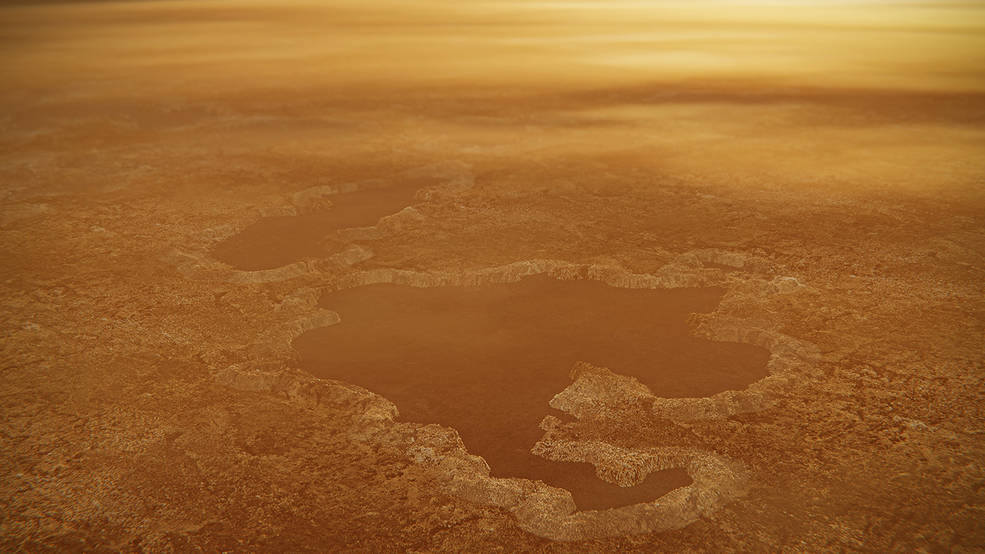NASA’s Casino Spacecraft has sent back some explosive data from Saturn’s moon Titan, the only celestial body other than Earth that is thought to have free flowing liquid on its surface, in this case rivers and lakes and precipitation of methane.
Taking new data from the Casini Space Craft, researchers have proposed that the cliffs surrounding the lakes at Titan’s north pole are sheer and soar hundreds of metres above the surface level of the lakes.
It is thought that these mysterious crater lakes may have been formed by violent explosions of warming liquid nitrogen from below the surface of Titan.
An alternative theory for how the dim rimmed crater lakes formed on Titan has turned the conventional theory on its head.
Previously it was conceived that the lakes were formed via liquid methane melting ice and organic compound rocks on the surface, but now it has been proposed that the lake have been formed via explosion.
Jonathan Lunine, a Cassini scientist who co-authored the study, said in a release:
“These lakes with steep edges, ramparts, and raised rims would be a signpost of periods in Titan’s history when there was liquid nitrogen on the surface and in the crust.”
An international team of Scientists lead by Giuseppe Mitri of Italy’s G. d’Annunzio University are trying to match the data to their theory.
Describing the colossal wall-like rim of the lakes Mr Mitri said: “The rim goes up, and the karstic process works in the opposite way.
”We were not finding any explanation that fit with a karstic lake basin.
In reality, the morphology was more consistent with an explosion crater, where the rim is formed by the ejected material from the crater interior.
“It’s totally a different process.”
Precipitation on the strange moon of Titan consists of hydrocarbons.
On Earth lakes and seas are replenished by falling liquid water, but Titan has downpours of methane and great rivers of the compound flowing from the high mountainous regions through great plains towards dream seas.
Titan is the only planetary body in our solar system other than Earth known to have stable liquid on its surface.
The radar data were gathered by the Cassini Saturn Orbiter, a mission managed by NASA’s Jet Propulsion Laboratory.
The Casini spacecraft was developed in Pasadena, California.
The study of the images retrieved from Casini was conducted by an international team of scientists led by Giuseppe Mitri of Italy’s G. d’Annunzio University.

